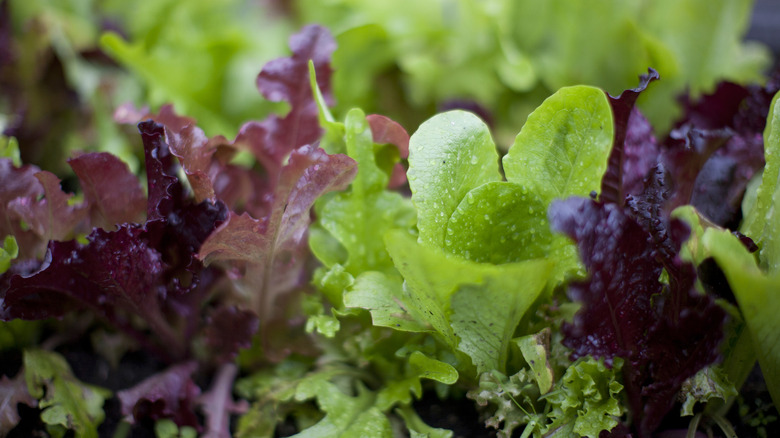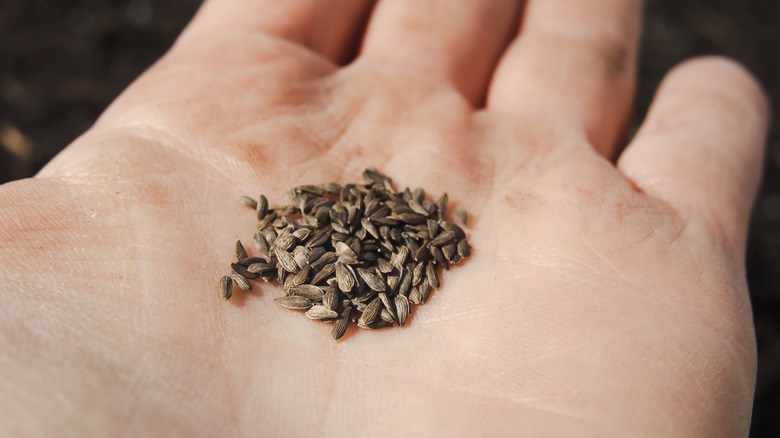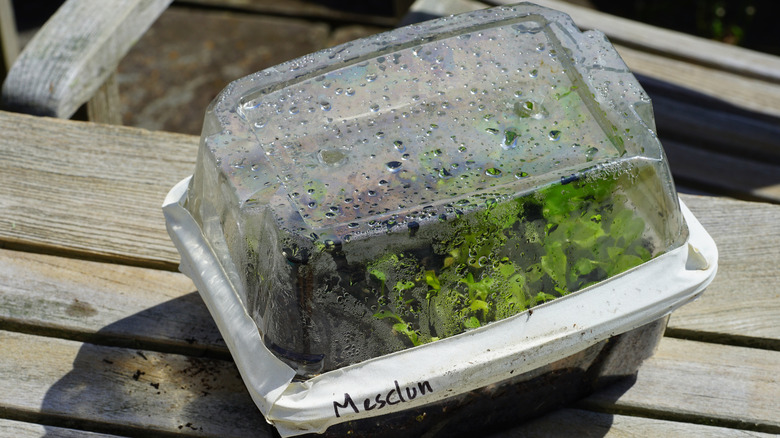How To Grow Lettuce Indoors Year Round Without A Garden
Nursing your own lettuce from seed to harvest can be a bit of a challenge outdoors. The temperatures have to be just right. When it's too hot, the greens bolt and become unpalatably bitter. And lettuce is definitely not a winter-hardy vegetable. Why not eliminate uncontrollable climate issues by bringing your salad garden indoors? Growing lettuce in the house is a smart solution for temperature control and for having tasty leaves closer at hand.
Getting an indoor lettuce patch going involves a handful of important steps. While it's not tricky enough to avoid, there are some conditions you have to meet for your best chances of a harvest. You'll need plenty of light and the right container, soil, and seeds. Needless to say, you'll also need patience and the willingness to adjust your growing setup if necessary.
Kick start your indoor farming adventure by plugging in a grow light or making space by a south-facing window that's relatively warm and free of drafts. Dig through your recycling bin for some empty food containers that are perfect DIY seed starters. Get some seed starting mix and seeds, within three to four weeks you may be biting into homegrown lettuce.
Pre-sprouting criteria
Start with the best seeds for the job. Leaf lettuce is more well-suited to indoor growing than head varieties, and there are even types of lettuce that grow better than others in winter sunlight. Some great indoor contenders are 'Tom Thumb', 'Baby Oakleaf', 'Arctic King', and 'Winter Marvel'.
Shallow containers — about 3 to 4 inches deep — are ideal for lettuce seedlings, and options with clear lids and drainage are perfect. You can use seed-starting trays with lids or rescue a takeout container or clamshell pastry box from the bin. Poke drainage holes in the bottoms of repurposed receptacles, and fill them with a seed starting soil mix. Check out our winning recipe for a DIY blend based on Home Depot's organic seed starting mix to save a few bucks over commercial mixes. Fill the containers nearly full with soil, and wet the surface before scattering seeds. Add a thin layer of soil over the seeds.
If your container has a clear lid, close it to hold in moisture. If not, you can cover the planters with plastic wrap. Set up your containers in a warm window that gets at least 6 hours of sunlight. Lettuce germinates best at temps between 70 and 75 degrees Fahrenheit, so placing containers on a heat mat can help them reach this sweet spot.
Anticipating the harvest
Check your planters daily to watch for sprouts. Once seedlings appear, remove the cover and thin them with scissors to about 1 inch apart. Keep a close eye on the amount of light they're getting and the moisture level in the soil. If your young plants take on a yellow tint and get too leggy, that's a sign they need more light. To give them a brightness booster, there are lots of types of grow lights. Some options may need to stay on longer than others, so you might have to adjust your settings to find the sweet spot for your indoor lettuce.
Make sure the soil stays moist and that the air doesn't get too dry. The Illinois Extension suggests filling a larger tray with pebbles and water to set the planters on; the water will evaporate close to the plants and add vital moisture to the air. When the seedlings grow their first set of leaves, begin giving them fertilizer. Diluted 5-5-5 is a good choice. Once the plants reach 4 inches in height, they're ready to eat. Harvest leaves from the outside edges of each plant first since they grow new leaves from the center.


